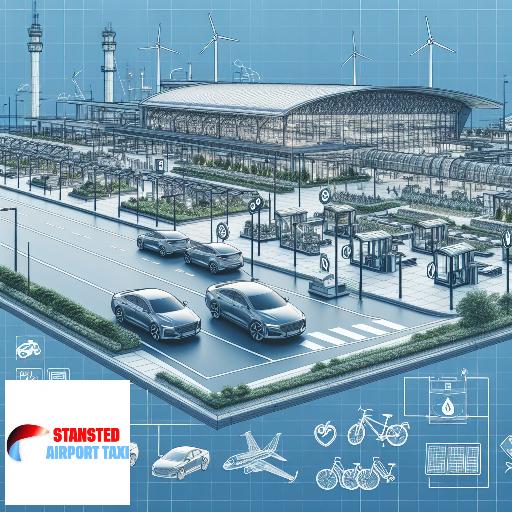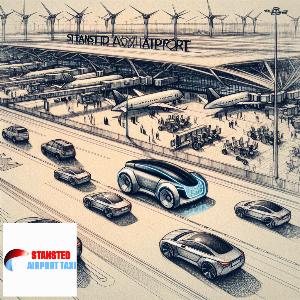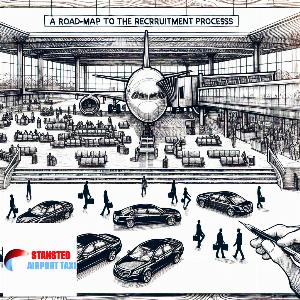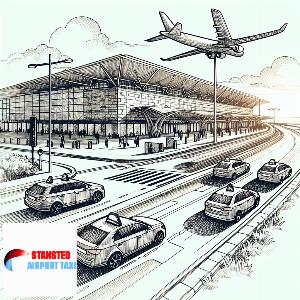The Environmental Initiatives of Stansted Airport

Stansted Airport's Carbon Neutral Status
Stansted Airport, one of the UK's busiest airports, has achieved a significant milestone in its commitment to environmental sustainability by attaining Carbon Neutral status. This achievement is a testament to the airport's dedication to reducing its carbon footprint and contributing to global efforts to combat climate change. The airport has implemented a range of initiatives to achieve this status, including the use of renewable energy sources, energy-efficient technologies, and sustainable transport options. It has also invested in carbon offsetting projects to balance out any remaining emissions. This commitment to environmental sustainability sets a positive example for other airports and industries to follow. Stansted Airport's Carbon Neutral status is not just a significant achievement for the airport itself, but also a significant step forward in the aviation industry's efforts to reduce its environmental impact.
Waste Management at Stansted Airport
Stansted Airport, one of the UK's busiest airports, has been making significant strides in its environmental initiatives, particularly in waste management. The airport has implemented a comprehensive waste management strategy that prioritizes recycling and reducing landfill waste. This includes the segregation of waste at source, which allows for more efficient recycling processes. The airport also encourages passengers and staff to participate in its recycling efforts, with clearly marked recycling bins throughout the terminal. Additionally, Stansted Airport has partnered with local waste management companies to ensure that non-recyclable waste is converted into energy, rather than being sent to landfill. This commitment to sustainable waste management not only reduces the airport's environmental impact, but also sets a positive example for other airports and large businesses. Stansted Airport's waste management initiatives are a testament to its dedication to environmental responsibility.
Water Conservation at Stansted Airport
Stansted Airport is making significant strides in environmental stewardiness through its water conservation initiatives. The airport has implemented a comprehensive water management strategy, aiming to reduce water consumption and promote recycling. The strategy includes the installation of water-efficient fixtures in restrooms, rainwater harvesting systems, and regular audits to detect leaks. The airport also encourages passengers and staff to use water responsibly. These measures have resulted in a substantial decrease in water usage, contributing to the airport's overall sustainability goals. Stansted Airport's commitment to water conservation not only reduces its environmental footprint but also sets a commendable example for other airports worldwide. The airport's water conservation efforts are a testament to its dedication to sustainable practices, demonstrating that environmental responsibility and aviation can indeed go hand in hand.
Stansted Airport's Noise Management
Stansted Airport is committed to managing and reducing noise pollution as part of its environmental initiatives. The airport has implemented a comprehensive Noise Management Plan, which includes measures such as noise monitoring, noise insulation schemes, and restrictions on night flights. The airport uses a state-of-the-art noise and track keeping system to monitor aircraft noise levels and ensure compliance with noise abatement procedures. The airport also works closely with airlines to promote the use of quieter aircraft and to implement noise-reducing operational procedures. Furthermore, Stansted Airport has established a Noise Insulation Scheme, offering financial assistance to local residents for the installation of noise insulation in their homes. The airport also enforces strict restrictions on night flights to minimize disturbance to local communities. These initiatives demonstrate Stansted Airport's commitment to reducing its environmental impact and improving the quality of life for local residents.
Biodiversity Conservation at Stansted Airport
Stansted Airport is making significant strides in biodiversity conservation, demonstrating a commitment to environmental sustainability. The airport has implemented a comprehensive Biodiversity Action Plan, focusing on preserving and enhancing the natural habitats within and around the airport. This includes the management of over 40 hectares of woodland, grassland, and wetland habitats, providing a sanctuary for a variety of wildlife species. The airport also works closely with local conservation groups to monitor and protect endangered species, such as the Great Crested Newt. Furthermore, Stansted Airport has installed bird boxes and bat roosts to encourage the growth of local populations. These initiatives not only contribute to the preservation of biodiversity but also demonstrate the airport's dedication to sustainable practices. Stansted Airport's efforts in biodiversity conservation are a testament to its commitment to environmental stewardship, setting a commendable example for other airports worldwide.
Stansted Airport's Energy Efficiency Initiatives
Stansted Airport, one of the busiest airports in the UK, has been making significant strides in energy efficiency as part of its environmental initiatives. The airport has implemented a series of measures to reduce its carbon footprint and promote sustainable operations. These include the installation of LED lighting across the airport, which not only reduces energy consumption but also improves visibility and safety. The airport has also invested in electric vehicles for its ground fleet, further reducing emissions. Additionally, Stansted has implemented an innovative energy management system, which monitors and controls energy use across the site. This system has led to significant energy savings and has been recognised with an ISO 50001 certification. These initiatives demonstrate Stansted Airport's commitment to environmental sustainability and its role as a leader in energy efficiency within the aviation industry.
Air Quality Improvement at Stansted Airport
Stansted Airport has made significant strides in improving air quality as part of its environmental initiatives. The airport has implemented a series of measures aimed at reducing emissions and enhancing air quality. These include the introduction of electric-powered buses for passenger transport within the airport, reducing the reliance on diesel-powered vehicles. The airport has also invested in energy-efficient infrastructure, such as LED lighting and solar panels, to reduce its carbon footprint. Furthermore, Stansted has implemented strict guidelines for airlines, encouraging them to use the latest, most fuel-efficient aircraft. The airport's commitment to improving air quality extends to its ground operations as well, with a focus on reducing emissions from ground handling equipment. These initiatives have resulted in a significant improvement in air quality at Stansted Airport, contributing to a healthier environment for passengers, staff, and the surrounding community.
Stansted Airport's Sustainable Transport
Stansted Airport, one of the UK's busiest airports, is making significant strides in its environmental initiatives, particularly in the area of sustainable transport. The airport has implemented a comprehensive strategy to reduce its carbon footprint and promote eco-friendly travel. This includes encouraging the use of public transport, cycling, and walking for staff and passengers alike. The airport has also invested in a fleet of electric buses to shuttle passengers between terminals, significantly reducing emissions. Furthermore, Stansted has partnered with local transport providers to offer discounted travel tickets, encouraging passengers to leave their cars at home. The airport's commitment to sustainable transport is part of a broader environmental strategy, which includes reducing waste, conserving water, and promoting biodiversity. These initiatives demonstrate Stansted Airport's dedication to sustainability and its commitment to playing a proactive role in combating climate change.
Stansted Airport's Climate Change Adaptation
Stansted Airport, one of the UK's busiest airports, is taking significant strides towards climate change adaptation. Recognising the urgent need to reduce carbon emissions, the airport has implemented a series of environmental initiatives. These include the use of renewable energy sources, such as solar panels, to power airport operations. The airport has also invested in electric vehicles and charging points, reducing reliance on fossil fuels. Furthermore, Stansted is committed to managing and reducing waste, with a focus on recycling and reusing materials wherever possible. The airport's ambitious goal is to achieve net-zero carbon emissions by 2050, in line with the UK's national target. These initiatives demonstrate Stansted Airport's commitment to sustainable practices and its role in combating climate change. The airport's efforts serve as a model for other airports and industries, highlighting the importance of environmental responsibility in the face of global climate challenges.
Community Engagement in Stansted Airport's Environmental Initiatives
Stansted Airport is making significant strides in environmental stewardiness through its robust community engagement initiatives. The airport is actively involving local communities in its environmental programs, fostering a sense of shared responsibility towards the environment. One of the key initiatives is the 'Stansted Airport Community Trust', which funds projects that protect the environment and promote energy efficiency within the vicinity of the airport. The airport also runs an annual 'Meet the Buyers' event, encouraging local businesses to adopt sustainable practices. Furthermore, Stansted Airport has established a 'Community Network' to facilitate dialogue and collaboration on environmental issues. This network includes local councils, environmental groups, and residents, ensuring diverse perspectives are considered in decision-making processes. These initiatives demonstrate Stansted Airport's commitment to not only reducing its environmental footprint, but also to empowering the community to participate in these efforts. The airport's approach serves as a model for how businesses can engage communities in their environmental initiatives.
Our Latest Blog Posts

The Architecture of Stansted AirportA Modern Marvel
Stansted Airport's architecture is a modern marvel, showcasing a futuristic design. Its floating roof, glass walls, and innovative use of space reflect a blend of functionality and aesthetics, makin ...

The Role of Stansted Airport in Eco-Tourism
Stansted Airport plays a pivotal role in eco-tourism, promoting sustainable travel by implementing green initiatives. It reduces carbon emissions, encourages recycling, and supports local biodivers ...

The Role of Stansted Airport in Education and Training
Stansted Airport plays a crucial role in education and training, offering apprenticeships and programs in aviation operations. It provides hands-on experience, equipping students with industry-spec ...

The Impact of Airline Competition on Stansted Airport
Increased airline competition at Stansted Airport has led to improved services and lower fares for passengers. However, it has also resulted in heightened congestion and environmental concerns, nec ...

The Role of Stansted Airport in Peacekeeping Operations
Stansted Airport plays a crucial role in peacekeeping operations, serving as a strategic hub for the deployment of troops and humanitarian aid. Its location and facilities make it an ideal base for ...

The Impact of Airline Strikes on Stansted Airport
Airline strikes significantly disrupt operations at Stansted Airport, causing flight cancellations and delays. This not only inconveniences passengers but also impacts the airport's revenue, highli ...

Stansted Airport: A Guide to the Promotion Process
Stansted Airport's promotion process is a strategic blend of performance evaluation and employee development. It emphasizes on recognizing talent, fostering skills, and providing opportunities for ...

The Art Installations at Stansted Airport
Stansted Airport is not just a travel hub, but a showcase of stunning art installations. These pieces, ranging from sculptures to murals, add a cultural touch, transforming the airport into a mini a ...

The Impact of Airline Localization on Stansted Airport
Airline localization at Stansted Airport has significantly boosted local economy, creating jobs and enhancing tourism. However, it also poses environmental concerns, including noise pollution and c ...

The Role of Stansted Airport in Waste Management
Stansted Airport plays a crucial role in waste management, implementing robust strategies to minimize waste. It prioritizes recycling and reusing materials, significantly reducing landfill waste an ...

The Impact of Airline Adaptability on Stansted Airport
The adaptability of airlines at Stansted Airport has significantly impacted its operations. Enhanced flexibility has improved flight schedules, increased passenger capacity, and boosted revenue, po ...

Stansted Airport: A Guide to the Evaluation Process
Stansted Airport's evaluation process is a comprehensive system ensuring optimal efficiency and safety. It involves rigorous checks on infrastructure, services, and security measures, providing pas ...

Stansted Airport: A Guide to the Verification Process
Stansted Airport's verification process ensures passenger safety and smooth travel. It includes identity checks, luggage screening, and flight confirmation. Understanding this process can help trav ...

Stansted Airport: A Guide to the Recruitment Process
Stansted Airport offers a comprehensive recruitment process, seeking top talent for various roles. The process includes application screening, interviews, and background checks, ensuring a diverse, ...

Stansted Airport: A Guide to the Demotion Process
Stansted Airport's demotion process involves a systematic approach to downsizing operations. This includes reducing flight schedules, reallocating resources, and restructuring staff roles, ensuring ...

The Role of Stansted Airport in Pollution Control
Stansted Airport plays a crucial role in pollution control, implementing measures like efficient energy use, waste management, and noise reduction. Its commitment to environmental sustainability se ...
Blogs Pages
Stansted Airport: A Guide to the Business Excellence Process

Blog about Stansted Airport: A Guide to the Business Excellence Process...
The Impact of Airline Resilience on Stansted Airport

Blog about The Impact of Airline Resilience on Stansted Airport...
The Role of Stansted Airport in Sustainable Transport

Blog about The Role of Stansted Airport in Sustainable Transport...
Stansted Airport: A Guide to the Redeployment Process

Blog about Stansted Airport: A Guide to the Redeployment Process...
Stansted Airport: A Guide to the Offboarding Process

Blog about Stansted Airport: A Guide to the Offboarding Process...
The Role of Stansted Airport in Community Development

Blog about The Role of Stansted Airport in Community Development...
Stansted AirportA Guide to the Customs Process

Blog about Stansted AirportA Guide to the Customs Process...
The Role of Stansted Airport in Environmental Activism

Blog about The Role of Stansted Airport in Environmental Activism...
Stansted Airport: A Guide to the Conflict Management Process

Blog about Stansted Airport: A Guide to the Conflict Management Process...




